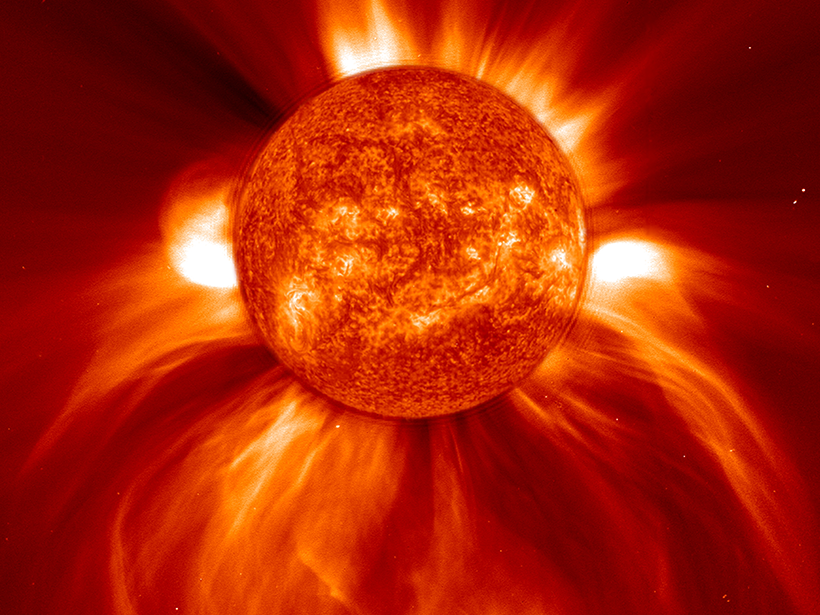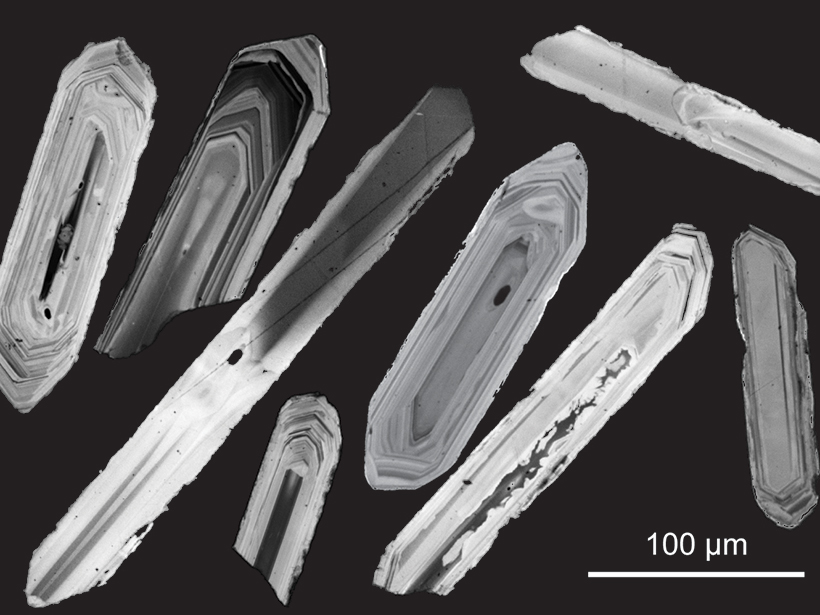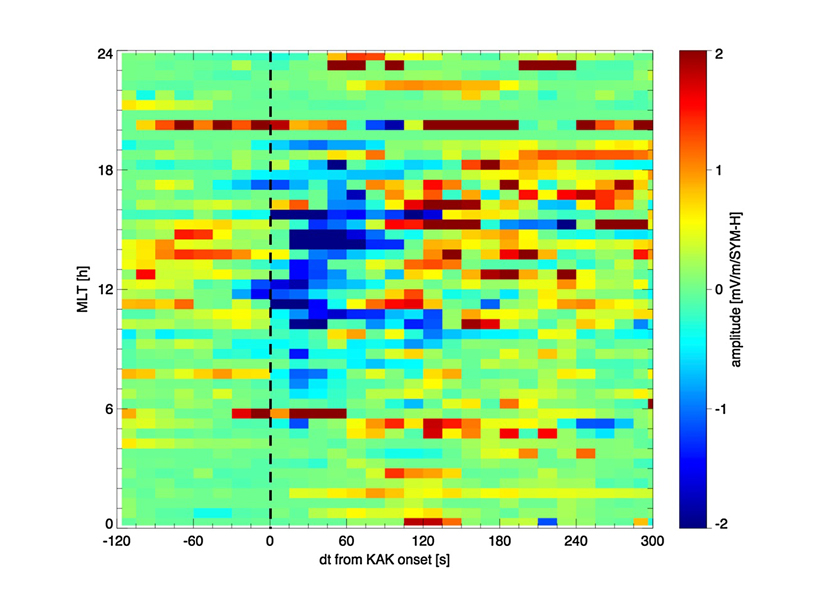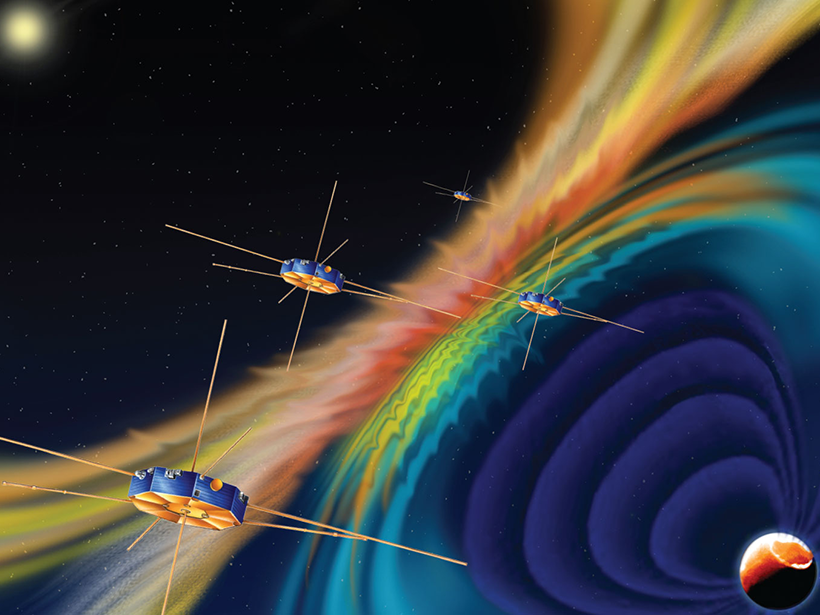Most boundaries in space are governed by magnetic fields, but not far behind the Earth, where the field change across the magnetopause plays very little role in the pressure balance relationship.
magnetic fields & magnetism
Tracing Electric Currents That Flow Along Earth’s Magnetic Field
A new study uses satellite data to examine a worldwide system of electric currents in greater detail than ever before.
Comparing the Accuracy of Geomagnetic Field Models
Improved accuracy and optimization of models could benefit many applications.
A Better Way to Predict Space Storms
A new model of solar winds could reduce false alarms.
Resolving a Mystery of the Ages
High-precision radiometric dates shed new light on the puzzling 600,000-year disparity in the timing of one of Earth’s most pivotal timescale boundaries.
Solar Wind Sets the Magnetosphere Ringing
A combination of data from satellites and ground-based instruments gives new insight into solar wind-magnetosphere-ionosphere interactions.
Jets of Ionospheric Cold Plasma Discovered at the Magnetopause
The lower-energy particles may play a larger role in magnetic reconnection than previously believed, influencing space weather near Earth.
Can Large Electric Fields Power Jupiter’s X-ray Auroras?
Electric fields with megavolt potentials in Jupiter’s polar region accelerate particles to 100 times more energy than Earth’s typical auroral particles, a new study finds.
How Earth’s Outer Radiation Belts Lose Their Electrons
A new analysis of three space storms reveals the mechanisms of particle loss from the Van Allen belts.
Angles of Plasma Ropes near Mars Point to Different Origins
Variation in the orientation of flux rope features in Mars’s magnetotail suggests that some of them form on the planet’s Sun-facing side and travel to the night side.










